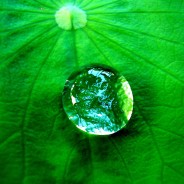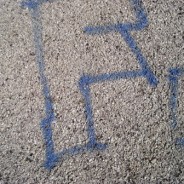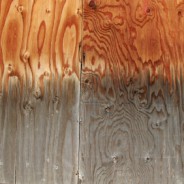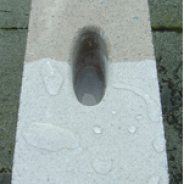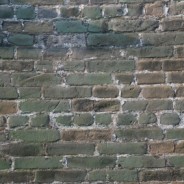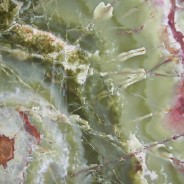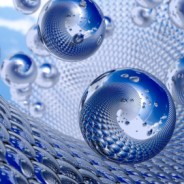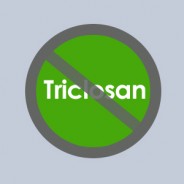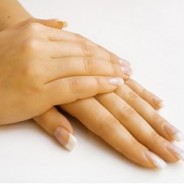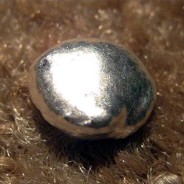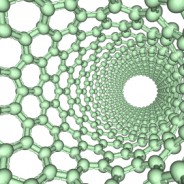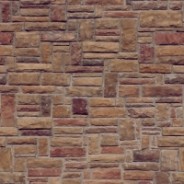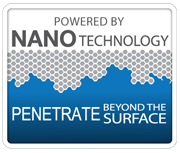“In answer to your question about coatings using TiO2 (Titanium Dioxide) In fact TiO2 (Titanium Dioxide) works. And when combined with silver it works really well. However, it is still the problem that Ti02 coatings are not long lasting. Our scientists have discussed a few new ideas and raw material information but so far (from the theoretical side) there are as yet no new ideas to avoid this problem. I understand that some companies...
read moreSuperhydrophobicity is a property of a coating or material that requires the following conditions: 1) A water contact angle greater than 150 degrees 2) For a water droplet at rest on the coating or material surface, the angle of tilt required for the droplet to go into motion must be low (< a few degrees) 3) The surface of the coating or material must exhibit a low level of contact angle hysteresis* (< a few degrees) *Contact angle hysteresis...
read moreBy applying the Nanolia AG Removal Gel to paint on a rough tarmac surface then hosing down with water it was easy to remove spray paint. Unbelievable, it was so easy!! A couple of brush strokes, quick rinse off with water – job done! PS – The gel also works on red brick.
read moreWooden garden furniture and structures such as pergolas look great – until they go grey or lose their colour due to weathering. Once the colour has gone, there seems to be no alternative other than to apply a darker varnish or stain. Until now that is, with the introduction of Nanolia WoodFresh, a highly effective water-based cleaning and “refreshing” product for all kinds of timber. It is ideal for restoring grey or...
read moreEspecially recommended for use on sandstone, plaster, concrete, fibre concrete or roof tiling, Nanolia Stone Guard is a “breathing” impregnation with a protection against soiling/marking for practically all types of porous or absorbent mineral-based materials. But so is Nanolia Concrete Protect. So what is the difference? While both of these products are “breathing” impregnations that protect against soiling/marking for...
read moreSimply brush it off with a stiff brush. Once brushed off apply Concrete Protect and apply second layer, wet on wet, within 10 mins of first layer as per instructions. Note: If you try to remove the efflorescence with water you will simply send the salts back into the substrate and make it harder to treat effectively.
read moreImportant: before you try any of these tests, you must first remove any traces of previous coatings or cleaning agents. Unless otherwise stated in the Product Information or Application instructions, our products must always be applied to a CLEAN SUBSTRATE. Cleaning the surface depends on whatever was previously applied to the surface. Petrochemicals, for example, need an alcohol-based cleaner to remove traces of this and then they require a...
read moreApart from the fact that our coatings and impregnations are bio-degradable, environmentally friendly, non-allergenic, easy to clean, easy to apply, do not smell bad, do not put a room out of action for a long time while drying, a little goes a very long way and overall they help reduce the carbon footprint, we at Nanolia would be very interested to hear our readers’ views on this important matter. For starters: Our coatings and impregnations...
read moreSo here’s a few of the known applications. We’d love to hear from you if you have some other suggestions that could be HUGE if only we knew. We might even send a nano-prize to the contributors of the best or most unusually practical ideas. As a reminder, this is what nano-coatings are all about … Nanolia coatings are based on pure liquid glass, silicon dioxide, SIO2. Among their many qualities they are “superdurable” and...
read moreIn August 2009, the Canadian Medical Association asked the Canadian government to ban triclosan use in household products under concerns of creating bacterial resistance and producing dangerous side products (chloroform). Triclosan also reacts with the free chlorine in tap water to produce lesser amounts of other compounds, like 2,4-dichlorophenol. Most of these intermediates convert into dioxins upon exposure to UV radiation (from the sun or...
read moreNanotechnology has rendered silver into an exceedingly powerful tool destined to be one of the most commonly used minerals in the modern health industry, environmental management industry, communications industry, sanitation industry, alternative power industry, energy industry and so many others. This wide-spread application is largely due to that of nano technology’s influence upon silver’s well-established (A) biological catalytic...
read moreBy Marion Horn, Reporter The risk of infection is high after an operation. Patients can be infected with antibiotic resistant bacteria. To avoid this, our researchers have studied the use of silver. We have now made effective remedies for this type of infection by using nano technology. Kings could afford to eat and drink from silverware as an expression of wealth, power and dignity. But that was not the only reason. The precious metal protected...
read moreWhat is colloidal silver? Basically a colloid is a homogenous system in which substances are to be found from two different phases (states). For example soot particles in the air (smoke), water vapour in the air (clouds), red corpuscles in water (blood) etc. There are many products on the market under the title silver colloids, but they are not necessarily comparable to the real thing. A real silver colloid (pure silver dispersed in water) on...
read moreThough the word “nano“ has become somewhat of a buzzword in respect of advertising, it is in fact a synonym for the portal to a completely new world in which the dimensions of molecules and atoms play their parts. Nanotechnology is considered to be the key technology for the 21st century. Chemical nanotechnology concerns itself with the investigation, manufacture and uses of structures which are below 100 nanometres. The aim is to identify...
read moreHaving sung the praises of the Nanolia range to my local supermarket owner he set Nanolia a challenge, reports Nanolia Director, Dr David Cochrane. The supermarket owner had recently completed his new house and had all the stone protected by a local company using what they considered to be the best product in the market. I should point out that he was not aware of the Nanolia range of products at this stage. The treatment had cost him a small...
read more

